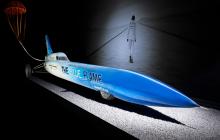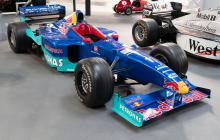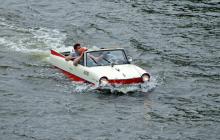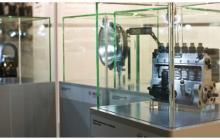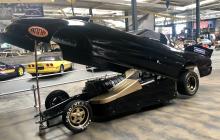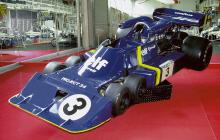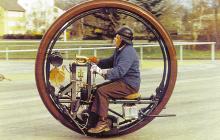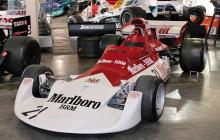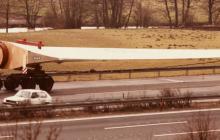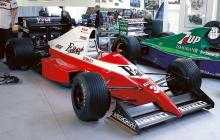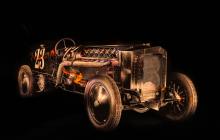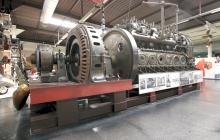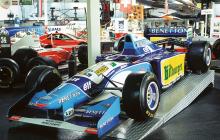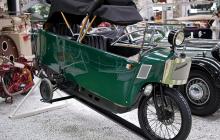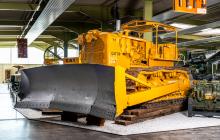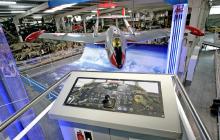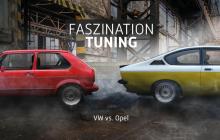The Blue Flame
One of the greatest sensations at the Technik Museum Sinsheim is the record breaker “The Blue Flame“, the fastest rocketpropelled surface-craft of all times. On October 23, 1970 the American Gary Gabelich set a fantastic new world record with this hybrid between car and rocket, when he reached an average speed of 1.014,656 km/h on the Bonneville salt flats.
Speed records are almost as old as the automobile itself. The first official record for fuel-propelled vehicles dates from the year 1902. On April 9 of that year, W.K. Vanderbilt reached a speed of 122,499 km/h with an automobile by Mors. The final point for vehicles with wheel-drive was set by the American B. Summers on November 12, 1965 with a speed of 658,649 km/h.
Any serious attempts to equal or top this record were no longer made. Some years before already other drivers had achieved substantially higher speeds with rocket- or jet-propelled vehicles, respectively, proving beyond any doubt that future absolute worldrecords were reserved for vehicles with thrust propulsion. A milestone in this field was set by Gary Gabelich who reached a speed of over 1,000 km/h with the “Blue Flame“. This name was absolutely befitting for the record-breaking vehicle, since the fuel, a highly explosive mixture of fluid natural gas and hydrogen peroxide, made it ride on a blue jet flame.
For 13 years not only the record for rocket propelled vehicles but the absolute speed record for surfacecraft in general was held by Gary Gabelich. It was not until October 4, 1983 that the Englishman Richard Noble succeeded in achieving an improvement, when he reached an average speed of 1.019,44 km/h in the desert of Black Rock, Nevada with his jet-propelled “Thrust 2“. With the “Thrust SSC“, developed by Richard Noble, a monster propelled by two Phantom Jet engines, Andy Green achieved the phenomenal record speed of 1227,2 km/h (faster than the speed of sound) in October of 1997.
Technical Data:
Producer: Reaction Dynamics Corp. and Milwaukee Natural Gas Industry, Institute of Gas Technology, Chica go; Propulsion: Natural gas-fuelled rocket propulsion, combustion time 20 seconds; Power: approx. 58,000 hp; Undercarriage: Semi-monocoque with stressed skin; Brakes: Disk brakes and brake chute. Dimensions: 11,64 m length, 1,82 m height, 7,77 m wheelbase; Weight 2,945 kg.

